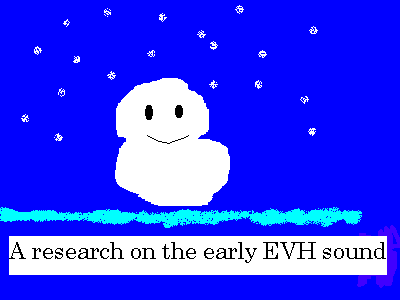

Although there are many things still unknown, I tried to find out how to make the EVH's early guitar sound.
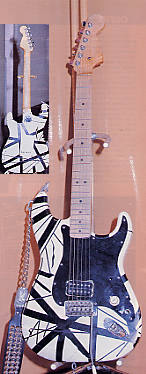 BODY : Northern Ash, 2 pieces. The weight seems middle (not too heavey). The paint was with acrylic lacquer for bike, not by nitro-cellulose.
BODY : Northern Ash, 2 pieces. The weight seems middle (not too heavey). The paint was with acrylic lacquer for bike, not by nitro-cellulose.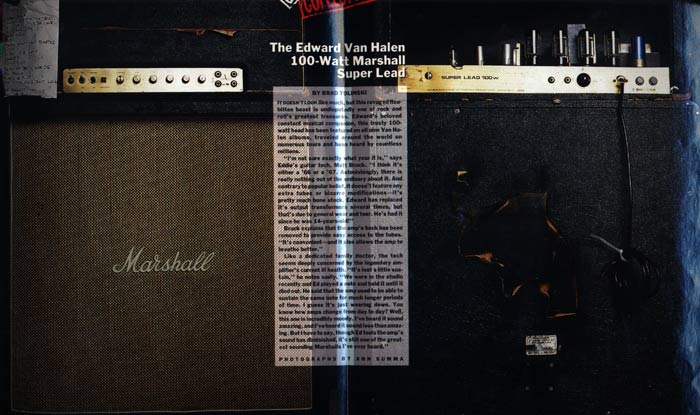
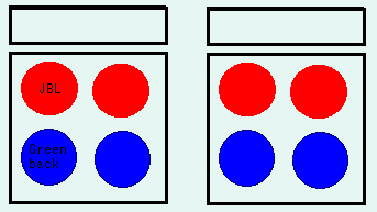 Eddie said he used "two Marshall amp heads and two combination cabinets for the 1st album" (Young Guitar Sep 1978), as an illustration on the right. *
Eddie said he used "two Marshall amp heads and two combination cabinets for the 1st album" (Young Guitar Sep 1978), as an illustration on the right. *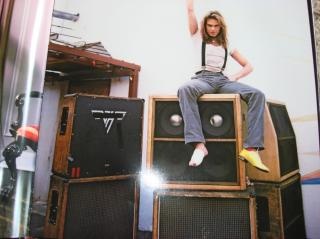 By the way, according to Van Halen's debut demo video, the cabinet covers were peeled.
Some guy in Japan followed this, but the sound changed poorly and regretted.
Photos at a recording studio for the 2nd album (as right) show the peeled cabinets, too. And it seems that Eddie had used peeled cabinets since club days.
By the way, according to Van Halen's debut demo video, the cabinet covers were peeled.
Some guy in Japan followed this, but the sound changed poorly and regretted.
Photos at a recording studio for the 2nd album (as right) show the peeled cabinets, too. And it seems that Eddie had used peeled cabinets since club days.
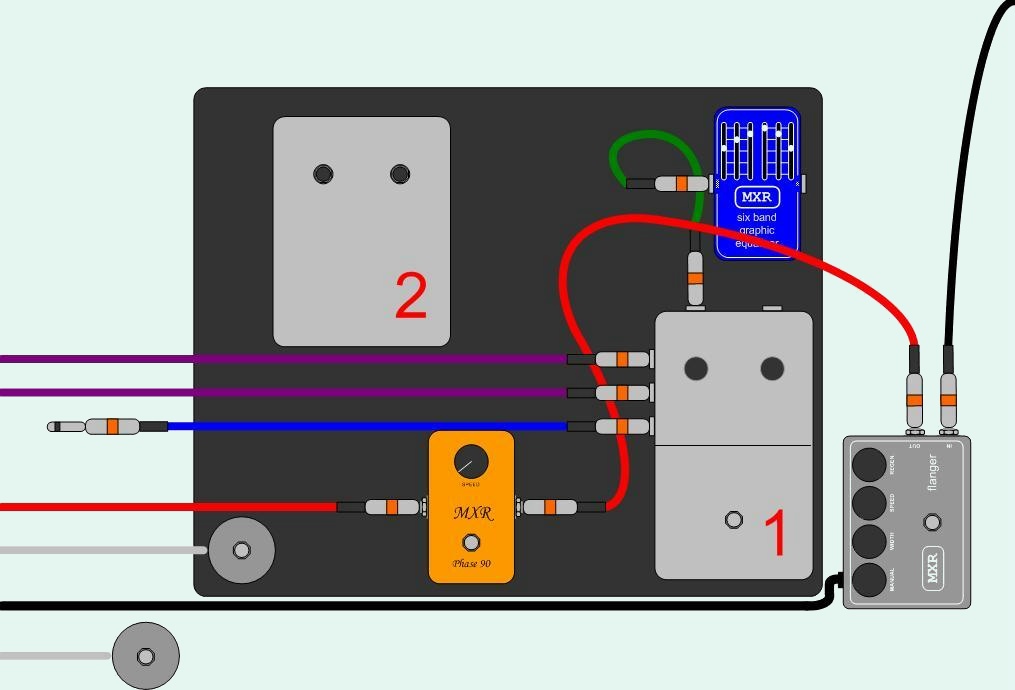 *
*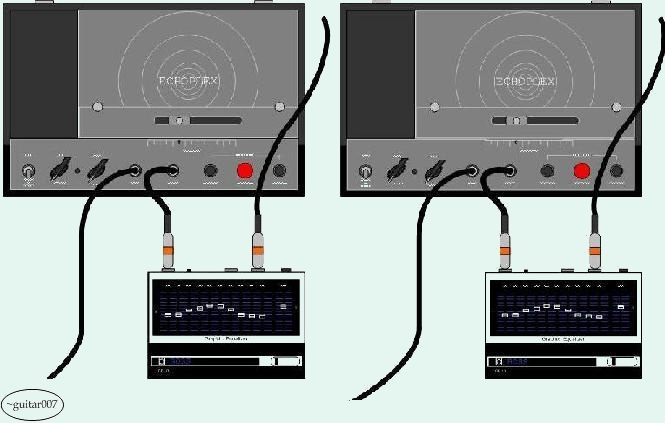 *
*